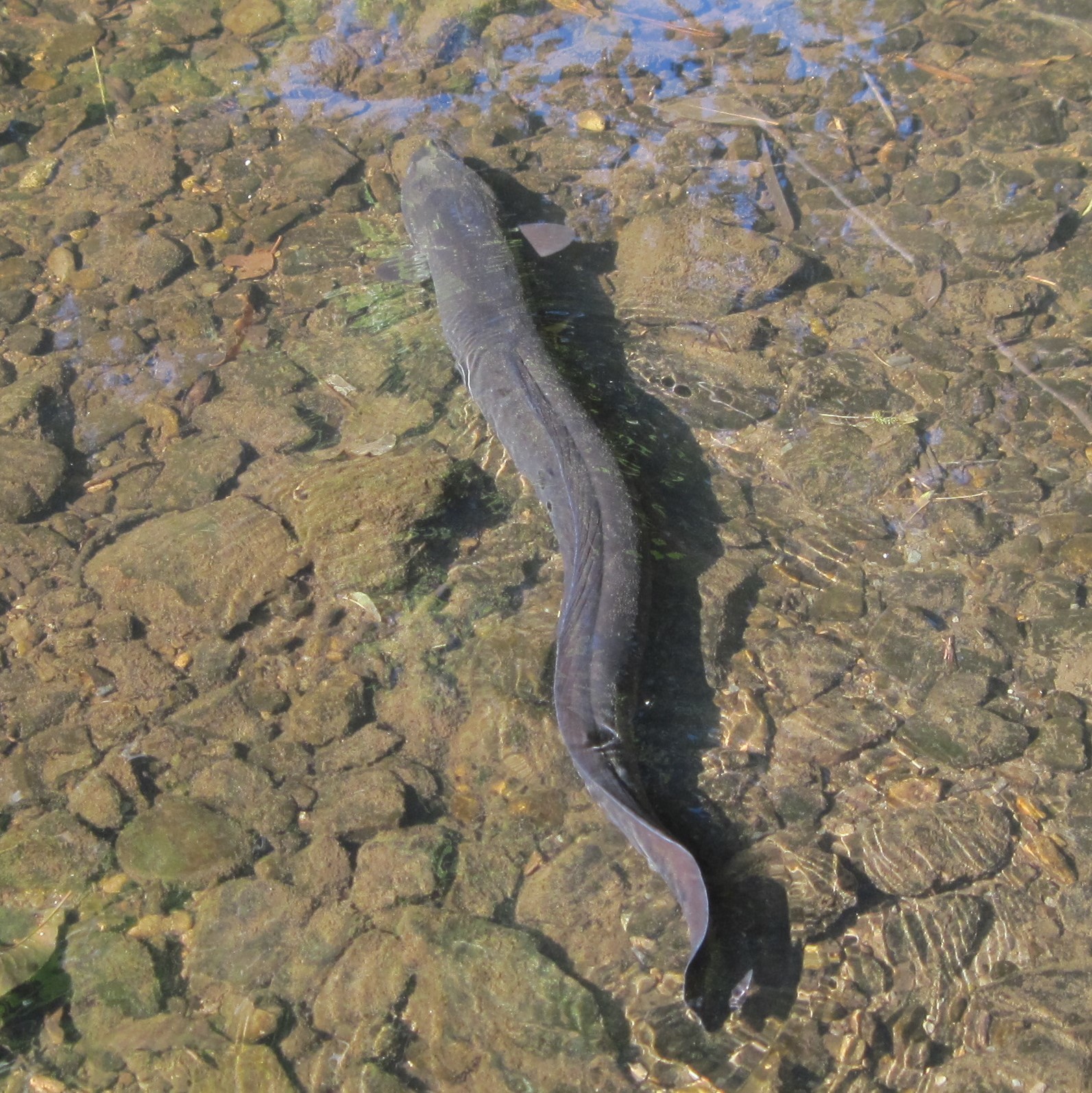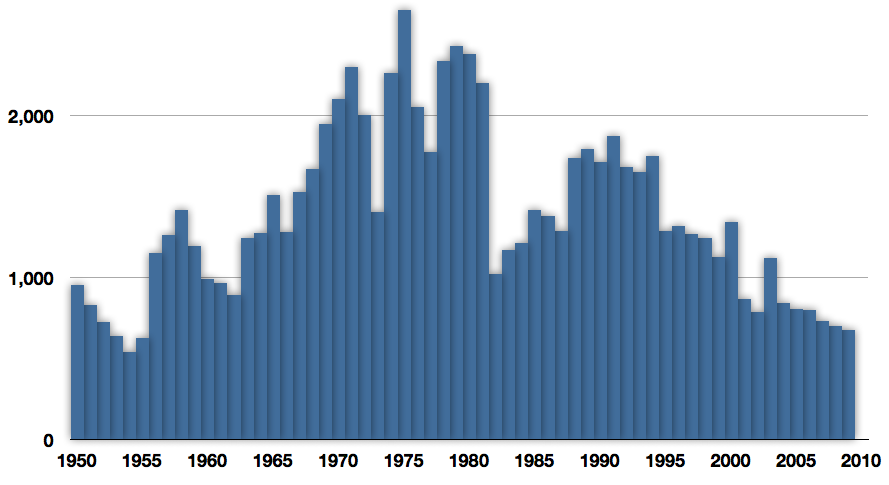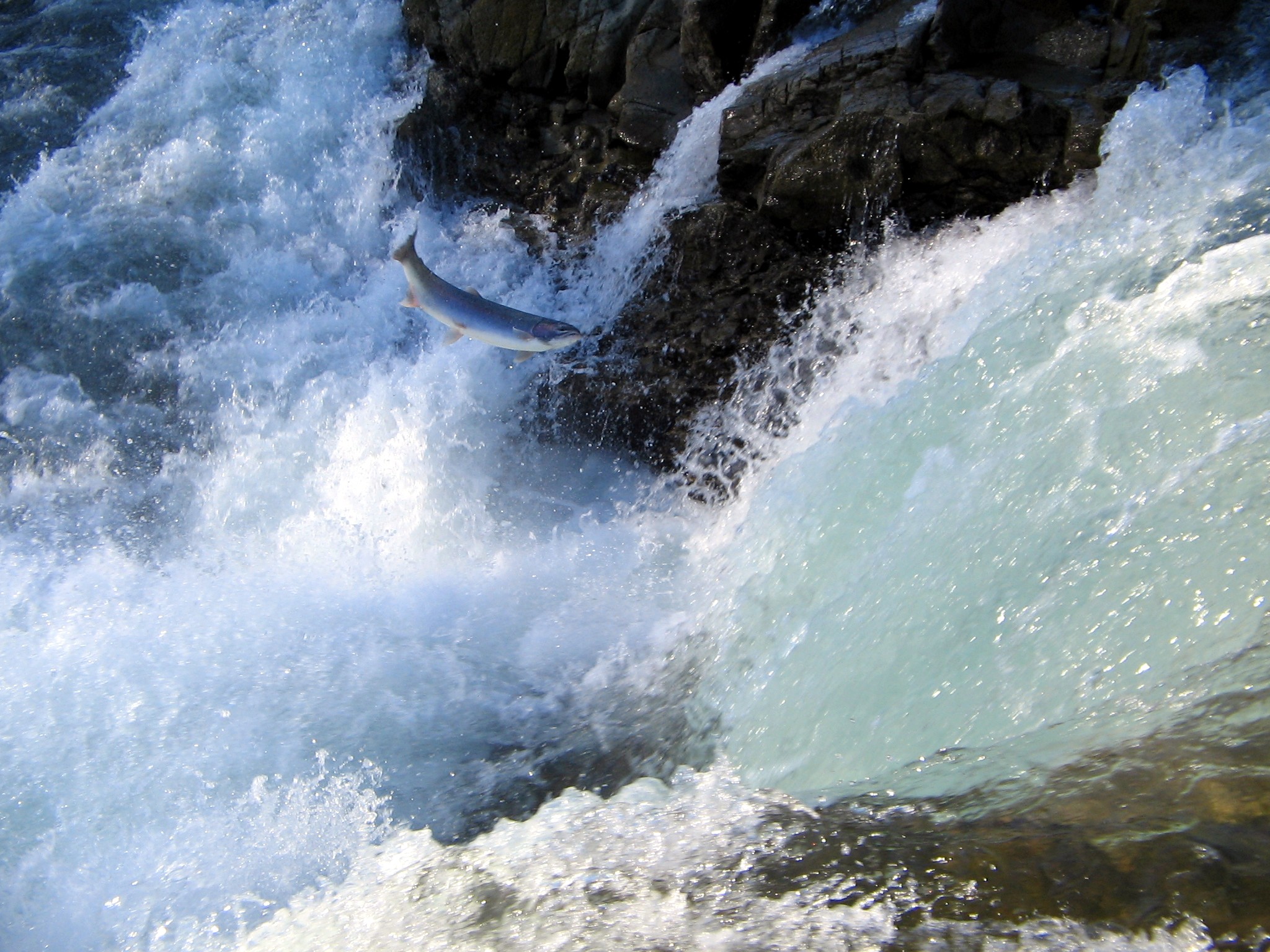|
Anguillidae
The Anguillidae are a family of ray-finned fish that contains the freshwater eels. All the extant species and six subspecies in this family are in the genus ''Anguilla'', and are elongated fish of snake-like bodies, with long dorsal, caudal and anal fins forming a continuous fringe. They are catadromous, spending their adult lives in freshwater, but migrating to the ocean to spawn. Eels are an important food fish and some species are now farm-raised, but not bred in captivity. Many populations in the wild are now threatened, and Seafood Watch recommend consumers avoid eating anguillid eels. Physical description Adult freshwater eels are elongated with tubelike, snake-shaped bodies. They have large, pointed heads and their dorsal fins are usually continuous with their caudal and anal fins, to form a fringe lining the posterior end of their bodies. They have relatively well developed eyes and pectoral fins compared to saltwater eels that they use to navigate and maneuver thro ... [...More Info...] [...Related Items...] OR: [Wikipedia] [Google] [Baidu] |
American Eel
The American eel (''Anguilla rostrata'') is a facultative catadromous eel found on the eastern coast of North America. Anguillidae, Freshwater eels are fish belonging to the Elopomorpha, elopomorph superorder, a group of Phylogenetics, phylogenetically ancient teleosts. The American eel has a slender, supple, snake-like body that is covered with a mucus layer, which makes the eel appear to be naked and slimy despite the presence of minute Fish scale, scales. A long dorsal fin runs from the middle of the back and is continuous with a similar ventral fin. Pelvic fins are absent, and relatively small pectoral fin, pectoral fins can be found near the midline, followed by the head and gill covers. Variations exist in coloration, from olive green, brown shading to greenish-yellow and light gray or white on the belly. Eels from clear water are often lighter than those from dark, Blackwater river, tannic acid streams. The eel lives in fresh water and estuaries and only leaves these habi ... [...More Info...] [...Related Items...] OR: [Wikipedia] [Google] [Baidu] |
New Zealand Longfin Eel
The New Zealand longfin eel (''Anguilla dieffenbachii'') is a species of freshwater eel that is endemic to New Zealand. It is the largest freshwater eel in New Zealand and the only endemic species – the other eels found in New Zealand are the native shortfin eel (''Anguilla australis''), also found in Australia, and the naturally introduced Australian longfin eel (''Anguilla reinhardtii''). Longfin eels are long-lived, migrating to the Pacific Ocean near Tonga to breed at the end of their lives. They are good climbers as juveniles and so are found in streams and lakes a long way inland. An important traditional food source for Māori (who name them ), longfin eel numbers are declining and they are classified as endangered, but over one hundred tonnes are still commercially fished each year. Description The easiest way to identify the longfin eel is by the length of its fins: the dorsal (top) fin is about two-thirds the length of the body and starts significantly further tow ... [...More Info...] [...Related Items...] OR: [Wikipedia] [Google] [Baidu] |
Japanese Eel
The Japanese eel (''Anguilla japonica''; ) is a species of anguillid eel found in Japan, Korea, Taiwan, China, and Vietnam, as well as the northern Philippines. Like all the eels of the genus ''Anguilla'' and the family Anguillidae, it is catadromous, meaning it spawns in the sea but lives parts of its life in freshwater. This food in Japan is called '' unagi''; they are an essential part of the food culture, with many restaurants serving grilled eel called ''kabayaki''. However, presumably due to a combination of overfishing and habitat loss or changing water conditions in the ocean interfering with spawning and the transport of their leptocephali this species is endangered. Breeding Between April and November, the Japanese eels leave their freshwater river habitats in East Asia to breed larvae in the ocean near the North Equatorial Current in the western North Pacific. Adult Japanese eels migrate thousands of kilometers from freshwater rivers in East Asia to their spawning area w ... [...More Info...] [...Related Items...] OR: [Wikipedia] [Google] [Baidu] |
Eoanguilla
''Eoanguilla'' ("dawn ''Anguilla''") is an extinct genus of prehistoric marine eel that lived during the early Eocene. It contains a single species, ''E. leptoptera'' from the Ypresian-aged Monte Bolca site of Italy. It is thought to have been an early marine relative of the modern freshwater eels (genus ''Anguilla''). It was first described in error as a fossil specimen of the European conger (then treated as ''Muraena conger'') by Volta in 1796. It was later reclassified into ''Anguilla'' by Agassiz as its relationship to that genus was determined, and reclassified into its own genus over a century later. See also * Prehistoric fish * List of prehistoric bony fish References † A dagger, obelisk, or obelus is a typographical mark that usually indicates a footnote if an asterisk has already been used. The symbol is also used to indicate death (of people) or extinction (of species or languages). It is one of the mo ... Monotypic prehistoric ray-finned fish gen ... [...More Info...] [...Related Items...] OR: [Wikipedia] [Google] [Baidu] |
Anguilla Borneensis
''Anguilla borneensis'', also known as the Borneo eel is a species of the genus ''Anguilla'' found in Borneo Borneo () is the List of islands by area, third-largest island in the world, with an area of , and population of 23,053,723 (2020 national censuses). Situated at the geographic centre of Maritime Southeast Asia, it is one of the Greater Sunda ....Watanabe, S., Aoyama, J. & Tsukamoto, K. (2014): On the Identities of ''Anguilla borneensis'', ''A. malgumora'', and ''Muraena malgumora''. ''Copeia, 2014 (3): 568-576.'' References Anguillidae Fish described in 1924 {{Anguilliformes-stub ... [...More Info...] [...Related Items...] OR: [Wikipedia] [Google] [Baidu] |
European Eel
The European eel (''Anguilla anguilla'') is a species of eel. Their life history was a mystery for thousands of years, and mating in the wild has not yet been observed. The five stages of their development were originally thought to be different species. They are critically endangered due to hydroelectric dams, overfishing by fisheries on coasts for human consumption, and parasites. Description European eels undergo five stages of development in their lifecycle: larva (leptocephalus), glass eel, elver, yellow eel, and silver eel. Adults in the yellow phase are typically around and rarely reach more than , but they can reach a length of up to in exceptional cases. They have 110 to 120 vertebrae. tend to live approximately 15–20 years in the wild, although captive specimens have lived for over 80 years. One such specimen known as "the Brantevik Eel" lived for 155 years in the well of a family home in Brantevik, a fishing village in southern Sweden. Ecology Eels tend to ... [...More Info...] [...Related Items...] OR: [Wikipedia] [Google] [Baidu] |
Anguilla Anguilla
The European eel (''Anguilla anguilla'') is a species of eel. Their life history was a mystery for thousands of years, and mating in the wild has not yet been observed. The five stages of their development were originally thought to be different species. They are critically endangered due to hydroelectric dams, overfishing by fisheries on coasts for human consumption, and parasites. Description European eels undergo five stages of development in their lifecycle: larva ( leptocephalus), glass eel, elver, yellow eel, and silver eel. Adults in the yellow phase are typically around and rarely reach more than , but they can reach a length of up to in exceptional cases. They have 110 to 120 vertebrae. tend to live approximately 15–20 years in the wild, although captive specimens have lived for over 80 years. One such specimen known as "the Brantevik Eel" lived for 155 years in the well of a family home in Brantevik, a fishing village in southern Sweden. Ecology Eels tend ... [...More Info...] [...Related Items...] OR: [Wikipedia] [Google] [Baidu] |
Catadromous
Fish migration is animal migration, mass relocation by fish from one area or body of water to another. Many types of fish migrate on a regular basis, on time scales ranging from daily to annually or longer, and over distances ranging from a few metres to thousands of kilometres. Such migrations are usually done for better feeding or to reproduce, but in other cases the reasons are unclear. Fish migrations involve movements of school of fish, schools of fish on a scale and duration larger than those arising during normal daily activities. Some particular types of migration are ''anadromous'', in which adult fish live in the sea and migrate into fresh water to spawn (biology), spawn; and ''catadromous'', in which adult fish live in fresh water and migrate into salt water to spawn. Marine forage fish often make large migrations between their spawning, feeding and nursery grounds. Their movements are associated with ocean currents and with the availability of food in different area ... [...More Info...] [...Related Items...] OR: [Wikipedia] [Google] [Baidu] |
Biodiversity Loss
Biodiversity loss happens when plant or animal species disappear completely from Earth (extinction) or when there is a decrease or disappearance of species in a specific area. Biodiversity loss means that there is a reduction in Biodiversity, biological diversity in a given area. The decrease can be temporary or permanent. It is temporary if the damage that led to the loss is reversible in time, for example through ecological restoration. If this is not possible, then the decrease is permanent. The cause of most of the biodiversity loss is, generally speaking, human activities that push the planetary boundaries too far. These activities include habitat destruction (for example deforestation) and land use intensification (for example monoculture farming). Further problem areas are Air pollution, air and water pollution (including nutrient pollution), over-exploitation, Invasive alien species, invasive species and climate change. Many scientists, along with the ''Global Assessment ... [...More Info...] [...Related Items...] OR: [Wikipedia] [Google] [Baidu] |
Climate Change
Present-day climate change includes both global warming—the ongoing increase in Global surface temperature, global average temperature—and its wider effects on Earth's climate system. Climate variability and change, Climate change in a broader sense also includes previous long-term changes to Earth's climate. The current rise in global temperatures is Scientific consensus on climate change, driven by human activities, especially fossil fuel burning since the Industrial Revolution. Fossil fuel use, Deforestation and climate change, deforestation, and some Greenhouse gas emissions from agriculture, agricultural and Environmental impact of concrete, industrial practices release greenhouse gases. These gases greenhouse effect, absorb some of the heat that the Earth Thermal radiation, radiates after it warms from sunlight, warming the lower atmosphere. Carbon dioxide, the primary gas driving global warming, Carbon dioxide in Earth's atmosphere, has increased in concentratio ... [...More Info...] [...Related Items...] OR: [Wikipedia] [Google] [Baidu] |
Monte Bolca
Monte Bolca is an Ypresian, Early Eocene-aged geologic site located near Verona, Italy, Verona, Italy. A ''Konservat-Lagerstätte'', it contains an extremely well-preserved and diverse marine biota, including the most diverse fish fauna of any Cenozoic fossil site, as well as many of the earliest fossil occurrences of modern marine fish groups. It was one of the first fossil sites with high quality preservation known to Europeans, with studies of its biota dating back to the 18th century and earlier, and is still an important source of fossils. History Strictly speaking, the Monte Bolca site is one specific spot near the village of Bolca in Italy, known as the ''Pesciara'' ("The Fishbowl") due to its many extraordinarily well preserved Eocene fish fossils. However, there are several other related outcroppings in the general vicinity that also carry similar fossils, such as Monte Postale and Monte Vegroni. The term Monte Bolca is used interchangeably to refer to the one, original s ... [...More Info...] [...Related Items...] OR: [Wikipedia] [Google] [Baidu] |





